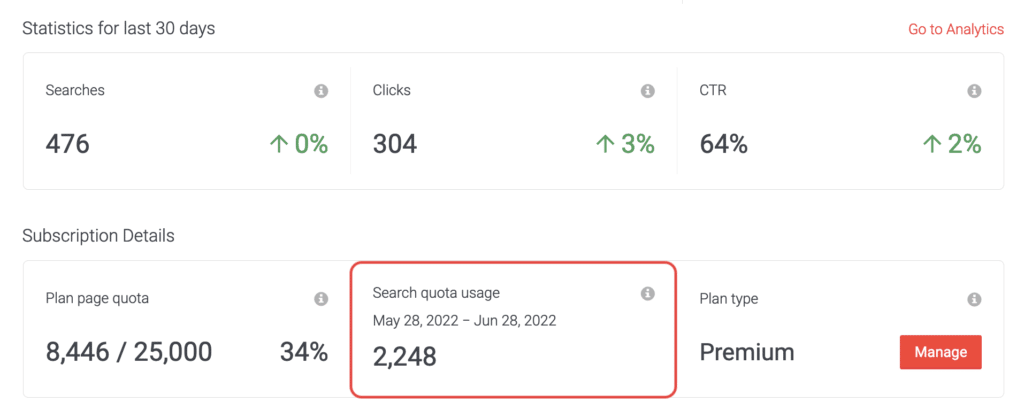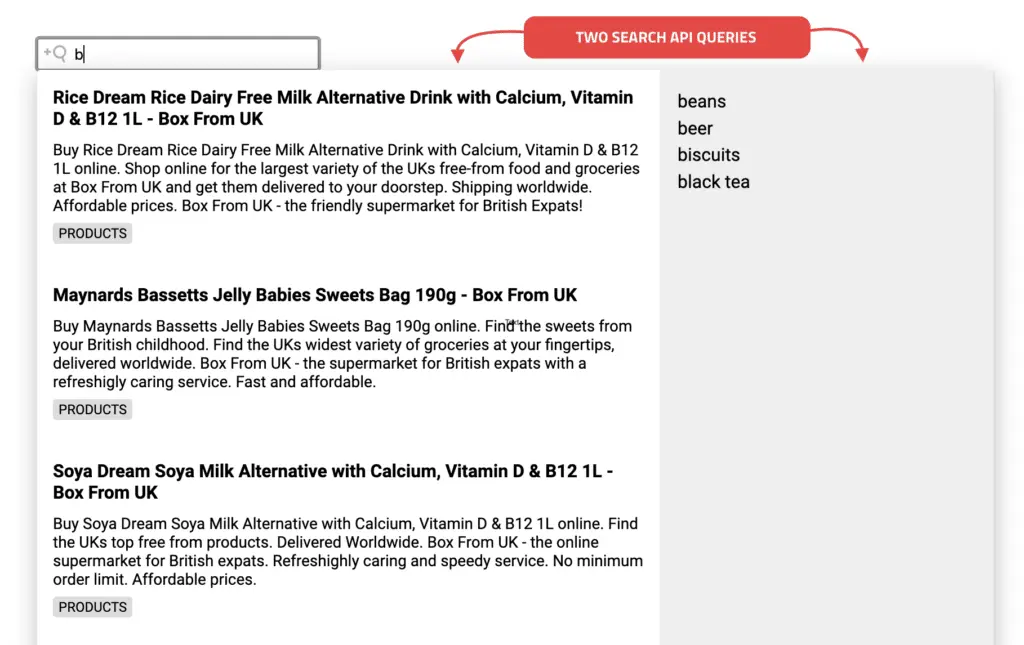Search Queries
When tracking your search quota usage or identifying trends in your search analytics, it is useful to understand the distinction between a Search API query and a User search query. This document will help clarify these events and identify when each occur in a user’s search experience.
A user search query is a single search phrase entered by a user in a search field. These queries are recorded in the Analytics section of the AddSearch dashboard. As a user enters text in the search-as-you-type view, they receive intermediate search results while typing. Together, these intermediate results and the final search result count as a single user search query. If a user types another search phrase after that, even within the same session, it will be counted as a second query. Data about the search quota usage for your index can be found in the AddSearch dashboard:

A user search query differs from a Search API query. A Search API query is any query received and processed by AddSearch. This includes:
Each suggestion and result, including additional results loaded via pagination or a “show more” results links, is the outcome of an API query. All search API queries, such as searches and suggestions shown in the screenshot below, are recorded as individual events. If your search configuration employs facets and filters, each filtering action will send a new search API query.

If you implement a “search-as-you-type” functionality, throttling with at least 200ms delay between requests is recommended. This will reduce the number of recorded queries. In the readymade search designer tool, this can be modified with the API throttle time setting. On a search results page, a query is only sent once per search phrase. However, it is possible to enable search-as-you-type functionality on a search results page, which will send a larger number of requests.
Was this helpful?
Need more help?
We’re always happy to help with code or other questions you might have. Search our documentation, contact support, or connect with our sales team.